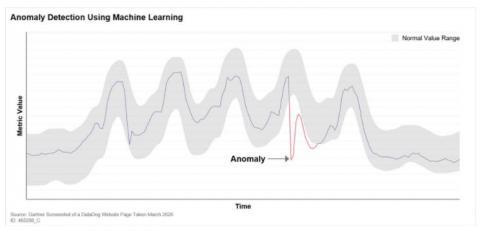Operations | Monitoring | ITSM | DevOps | Cloud
Latest Posts
Kubernetes Cost Management: Analyze Your Kubernetes Cost | CloudZero
The New Age of Cloud Cost Management: Cloud Cost Intelligence (And 8 Best Practices)
AWS Cost Optimization: A Guide To Managing Your AWS Bill
For developers and programmers, Amazon Web Services (AWS) offers many benefits. It gives you access to the computing and DevOps tools you need at the press of a button — which helps you get products out the door fast. However, it can be challenging to control your costs and identify waste. In this comprehensive guide, we will examine some practical steps you can take for AWS cost optimization.
3 Times CloudZero Helped Real Companies Take Action With Cloud Cost Intelligence
One of the many aspects of CloudZero’s cloud cost intelligence is anomaly detection. Unlike solutions which require you to set budgets or thresholds, CloudZero uses machine learning to automatically detect and alert on anomalies, then send them directly to dev team Slack channels where the responsible engineers can view and take action. Here are just a few examples of real customer anomalies, what caused them, and the action the customer took.
3 Things Gartner Says Are Difficult About Cost Management and Optimization That CloudZero Makes Easier
Earlier this year, Gartner published a report called “How to Manage and Optimize Costs of Public Cloud IaaS and PaaS.” Overall, we agreed with the piece and wrote a blog post about what they get right (and where they miss). However, one thing that stood out to us is how many aspects of optimization Gartner described as very difficult — which CloudZero can help make easier.
What Gartner Gets Right About Cloud Cost Optimization (and Where They Miss)
Earlier this year, Gartner published “How to Manage and Optimize Costs of Public Cloud IaaS and PaaS,” by analysts Marco Meinardi and Traverse Clayton. As a company that is focused on enabling engineering teams with cloud cost intelligence, we were of course curious what they had to say. Now, if you are familiar with Gartner, you know they have a reputation for serving enterprise clients, so they can sometimes be — well, enterprisey.
Cost per Tenant: A Key Part of the AWS Well-Architected Strategy SaaS Lens
Multi-tenancy is one of the key properties of any effective SaaS solution. It gives companies the economies of scale, elasticity, and operational efficiency to offer competitive products with strong margins. However, multi-tenancy has a tradeoff: cost visibility. Because customers share AWS resources in multi-tenant architecture, the billing data shows the resources you’ve utilized, but not by who or to do what. It’s possible to build this kind of visibility in.
The Evolution of Cloud Cost Optimization - and The Next Strategic Advantage
Every CEO is looking for an edge. Every change in IT — whether we’re talking about the move away from company owned data centers to VMs, or the latest digital transformation we’re seeing today — has always been about gaining a strategic advantage. Companies want to do more at a lower cost, and they want the freedom to pivot quickly without fixed costs.
What Is Profitable Innovation and How Can Your Business Achieve It?
In the context of businesses, the ultimate goal of innovation for technology companies is to drive a profit. This means that even though many software engineering problems can be solved with enough time and budget — just because a business can solve a problem doesn’t mean that they should. Sometimes, even once a team has figured out how to solve an engineering problem, it doesn’t make sense to deploy the solution — because it costs so much to operate.




